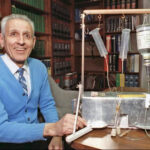It’s common to wonder about the different types of medical professionals available. Among them are Doctors of Osteopathic Medicine, known as D.O.s. You might ask, what is a D.O. for doctor care, and how do they compare to other physicians? This article clarifies what a D.O. is, their training, and how they contribute to healthcare.
D.O. vs. M.D.: Key Similarities in Medical Training
Both D.O.s and M.D.s (Doctors of Medicine) are fully licensed physicians in the United States who have completed rigorous medical training. Graduating from accredited medical schools, both types of doctors undergo similar educational paths.
Comprehensive Medical Education and Licensing
The core curriculum in both Doctor of Osteopathic Medicine and Doctor of Medicine programs is very much alike. Students in both types of medical schools study the foundational medical sciences including:
- Anatomy
- Physiology
- Pharmacology
- Pathology
- Microbiology
Following medical school, both D.O.s and M.D.s must complete residency training in their chosen specialty. Residency can range from three to seven years, depending on the specialty, and provides extensive hands-on clinical experience. Furthermore, to become licensed and practice medicine, both D.O.s and M.D.s must pass the same national licensing examinations. This ensures that all licensed physicians meet a unified standard of competency to provide patient care, prescribe medication, and perform surgery.
The Distinctive Approach of D.O.s: Osteopathic Manipulative Treatment (OMT)
While the foundational medical education is largely shared, a key differentiator for D.O.s is their additional training in osteopathic philosophy and Osteopathic Manipulative Treatment (OMT).
Integrating Manual Medicine into Patient Care
Osteopathic medicine emphasizes a “whole-person” approach to healthcare, considering the interconnectedness of the body’s systems. D.O.s are trained to use OMT, a set of hands-on techniques, to diagnose, treat, and prevent illness or injury. OMT involves using the hands to gently manipulate muscles, joints, and tissues. This manual medicine approach can:
- Alleviate pain
- Improve range of motion
- Support the body’s natural ability to heal
While not every D.O. utilizes OMT in their practice to the same extent, it remains a core component of osteopathic medical education and a unique tool in their approach to patient care.
Choosing Between a D.O. and M.D. for Your Healthcare
When seeking medical care, understanding the difference between a D.O. and M.D. can be helpful, but it’s crucial to recognize their fundamental similarities. Both are highly qualified physicians capable of providing a full spectrum of medical care.
Whether you see a D.O. or an M.D., you are under the care of a licensed physician who has undergone extensive medical training. The choice often comes down to individual patient preference and whether the osteopathic approach, particularly the potential use of OMT, aligns with your healthcare needs and philosophy.
In conclusion, a D.O. is a fully trained and licensed physician who offers a unique, whole-person perspective to medicine, often incorporating manual medicine techniques as part of their comprehensive patient care.


